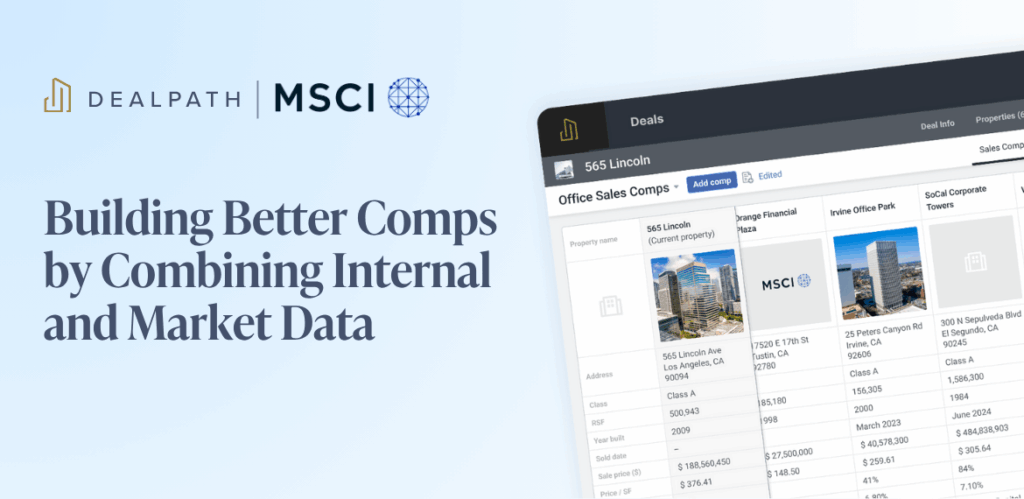Institutional investors share the common goal of generating revenue by building a portfolio with compounding value, but different investors accomplish this in various ways. Depending on risk tolerance, fund specifications and expertise, there are several types of real estate investment, as well as real estate investment strategies, that investment managers can employ. Each strategy presents a different level of risk and, consequently, returns.
Read on to learn more about the four main commercial real estate investment strategies, as well as the risk levels and reward potential for each.
Jump to:
- Types of Real Estate Investment
- Real Estate Investment Strategies
- Which Real Estate Investment Strategy Is Best?
The 5 Different Types of Real Estate Investment
As the market evolves and adapts to new technologies, new ways to invest in real estate continue to emerge. These are some of the most popular types of real estate investment through which investors spanning various backgrounds can deploy capital:
- Commercial: Commercial real estate investors acquire, sell, develop, and lend for industrial, office, retail, multifamily, hotels, and other commercial buildings
- Raw land: Raw land investors purchase land to either develop or sell for profit, which typically requires significant capital and awareness of zoning, development and other considerations
- REIT: Real estate investment trusts, or REITs, are publicly traded entities that invest in and own commercial real estate, enabling investors to own shares in buildings
- Crowdfunding: Crowdfunding platforms offer non-institutional investors access to investments typically only available to institutions
- Residential: Residential real estate investors own single-family homes and rent them to tenants, or flip them to buyers with investment strategies like fix-and-flip, live-in-flip, BRRRR and more
While there are many different types of real estate investment to choose from, commercial real estate remains one of the most profitable ways to generate returns. For the purposes of this article, we’ll focus on commercial real estate investment strategies.
Understanding The Four Main Commercial Real Estate Investment Strategies
When it comes to commercial real estate investment strategies, there are four main approaches: core, core plus, value added, and opportunistic. These investment strategies are not fundamentally different from each other–in all cases, investors buy properties with the goal of generating returns.
Furthermore, investors typically screen deals through similar data-driven analysis and due diligence processes across these investment strategies. All of these strategies can be bolstered by real estate investment software, though different strategies may call for unique workflows and considerations. For example, higher-risk investments may require additional scrutiny during due diligence.
Crucially, though, the balance between risk and return varies by strategy, which is often dictated by the type of real estate investment fund.
1. Core
Summary: The standard “buy and hold” investment strategy in which investors purchase high-quality buildings that generate stable revenue
Risk Profile: Low risk and returns
Typical IRR: Below 10%
Core investments enable investors to create value by buying and holding ideally located, high-quality buildings and portfolios. This real estate investment strategy presents relatively low risk, given that these properties retain value well. Because the risk is low, internal rates of return tend to hover below 10%. As tenants favor class A properties, there are typically minimal vacancies that detract from revenue.
Core investors generate returns namely through revenue, rather than capital appreciation. Because core investments are typically class A buildings, they generally won’t require capital injections to deliver the target revenue. Lucrative in both favorable and unfavorable market conditions, core investments are largely recession-proof.
2. Core Plus
Summary: A relatively low-risk investment strategy in which investors add value to mostly stable buildings with revenue-driving renovations
Risk Profile: Low-moderate risk and returns (slightly higher risk and returns than core investments)
Typical IRR: 10-14%
Like the core real estate investment strategy, the core-plus approach revolves around acquiring and holding assets. Core-plus buildings typically involve some risk, though, whether in the form of the building’s condition, location, age, or another factor that might impact value. Generally, though, core-plus buildings carry relatively stable value.
Core-plus investors add value by either filling significant tenant vacancies or making renovations. For example, a core-plus investor may acquire a high-quality building, then add amenities that attract tenants willing to pay higher rents. This real estate investment strategy tends to generate an internal rate of return around 10-14%.
3. Value-Add
Summary: A relatively high-risk investment strategy in which investors acquire buildings in need of capital for a 5-7 year period
Risk Profile: Moderate risk and returns
Typical IRR: 15-19%
Investors with a higher appetite for both risk and reward might pursue value-added strategies. Value-add investment strategies generally focus on assets that, for one reason or another, are in distressed situations and require capital to achieve profitability. This investment can take the form of renovations, repositioning the asset to a new asset class or tenant, or simply filling significant tenant vacancies, with the ultimate goal of creating stability.
It often takes at least five-seven years for the property to appreciate to the target internal rate of return. One advantage of value-add deals, though, is that firms can sell fully appreciated assets for well above the initial purchase price.
Value-added investments can be a more affordable way for investors to gain a foothold in major markets, without paying exorbitant prices for established, fully occupied properties. For value-added real estate investment strategies, internal rates of return are generally around 15-19%.
4. Opportunistic
Summary: The highest-risk investment strategy, in which investors acquire buildings that need significant investments to achieve profitability
Risk Profile: High risk and returns
Typical IRR: 20%+
Opportunistic real estate investment strategies cause investors to incur the highest level of risk, but with the highest potential for returns. These investments typically require a significant capital injection to address major challenges and become profitable.
In some cases, investors might buy dilapidated buildings to make thorough renovations. In others, firms might purchase low-occupancy or vacant buildings and lease more tenants until the asset reaches stability. It’s not uncommon for opportunistic investments to endure periods with minimal or no income, making them a liability.
Developments are sometimes considered opportunistic investments, as these projects require complete funding for construction. Opportunistic real estate investment strategies can deliver returns as high as over 20%, making them particularly attractive to some investors. Proptech continues to help investors uncover these lucrative opportunities in faster and easier ways.
Which Real Estate Investment Strategy Is Best?
So, which real estate investment strategy is best? While there is no one “best type of real estate to invest in”, each strategy presents unique benefits and risks. Investment managers typically raise capital for investments matching a specific risk profile, restricting managed funds to certain deals.
While some firms may have a higher appetite for opportunistic investments, most deliberately diversify their portfolios to mitigate risk. As market conditions change, it’s not uncommon for firms to reevaluate their exposure to risk, consider offloading certain assets and pivot accordingly.
Why It’s Time to Adopt Deal Management Software
Deal management software is changing how institutional investors source, manage and execute deals in real time. Real-time pipeline visibility enables investment teams to uncover the most profitable opportunities, while managing risk with data at their fingertips. In a data-first market where speed and efficiency are key, firms without deal management software risk falling behind competitors that are better equipped to act quickly and confidently.
Learn more about why it’s time for deal management software by downloading our free white paper.



